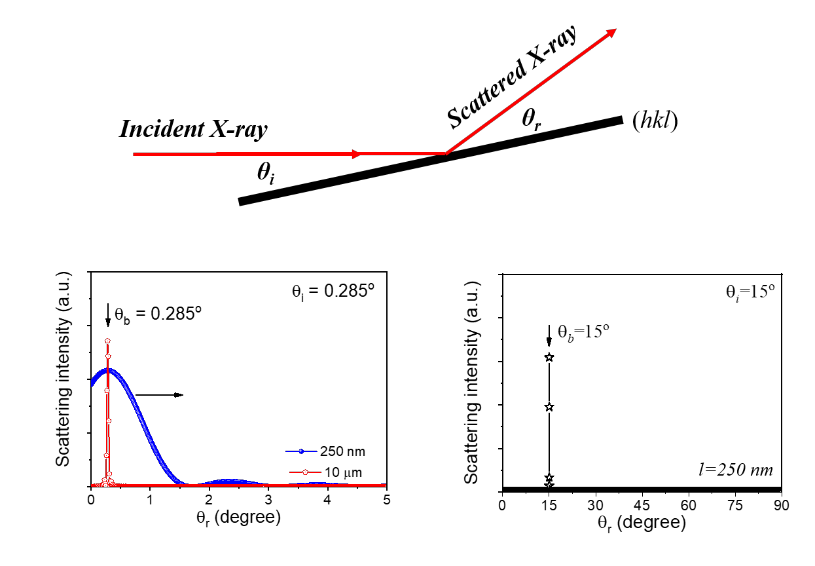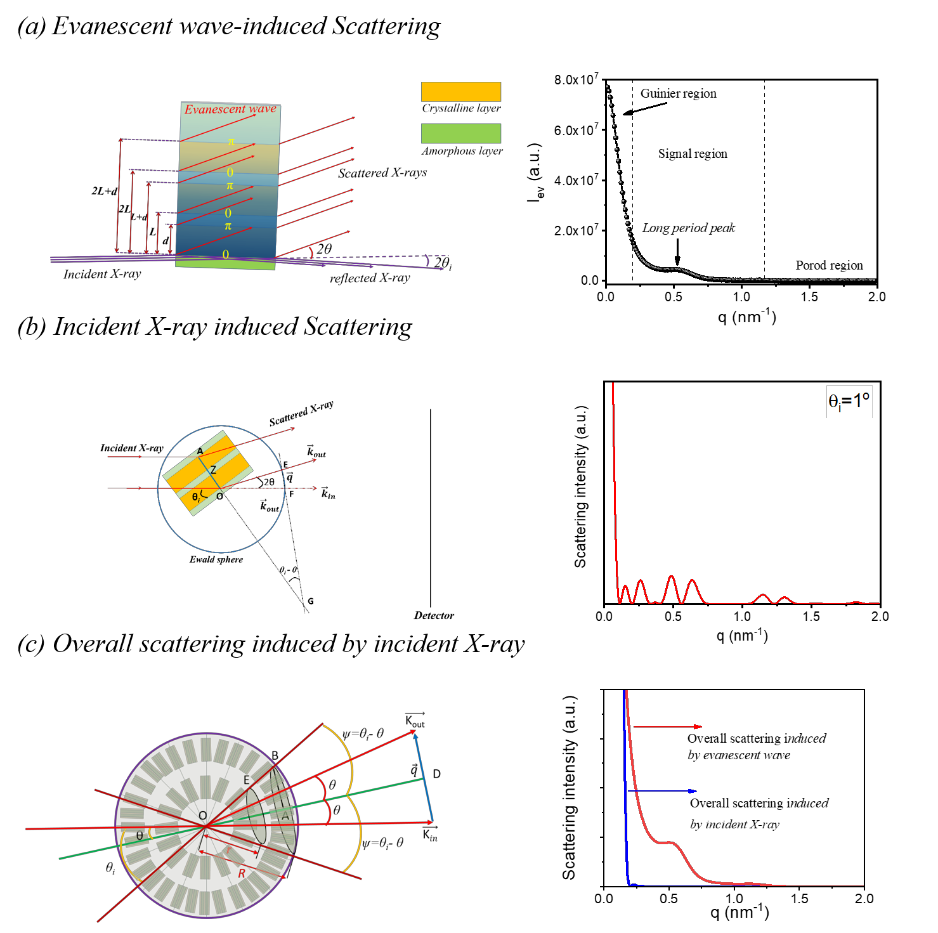Scientists proposed new small-angle X-ray scattering mechanism for polymer lamellar crystals of finding that SAXS from lamellar system actually was from the scattering induced by evanescent wave.
This work was done by TIAN Xingyou and his team with Institute of Applied Technology, Hefei Institutes of Physical Science.
Polymer forms folded-chain lamellar crystals and assembles further to lamellar stacks and spherulites during crystallization. Lamellar thickness and long period influence thermal and mechanical properties of semi-crystalline polymers greatly, which are two important physical quantities. Small-angle X-ray scattering (SAXS) is the most powerful tool to obtain the nanoscale information. For a long time, it was assumed that SAXS was mainly from electron density correlation. Fourier transform for it can obtain correlation function and interface distribution function, from which structural information can be obtained.
Actually, the assumption that SAXS was from electron density correlation was mainly based on the experience to deal with wide-angle X-ray diffraction (or WAXD). In WAXD, only when the incident angle is equal to or very close to the scattering angle, do the crystal plane have strong scattering and the crystal planes have strong interference, which is so-called Bragg condition. Classical theory assumed that such condition was also necessary for SAXS. Under such assumption, the scattering intensity at a wave vector depends on the statistical average value of the production of electron densities of two crystal planes apart from a distance Z. The higher the correlation, the stronger the scattering.
However, it can be easily found with simple calculation that for a crystal plane with lateral size of a few hundred nanometers, strong scattering can be found in wide-angle only when satisfying Bragg condition strictly, but in small q range, strong scattering can be found in a broad q range (see Figure 1). This leads to two subsequences. One, is that many lamellar stacks in a spherulite have contributions to a scattering at a wave vector. The interference between these lamellar stacks must be considered. The other is that the scattering induced by evanescent wave becomes significant. For the lamellar stack involved in total reflection, it has strong form factor, though it deviates from Bragg condition.
The researchers determined scatterings of various lamellar stacks in a spherulite. The interference between the lamellar stacks was also determined. Results indicated that the scattering induced directly by incident X-ray was not the origin of SAXS signal. As shown in Figure 2b, it formed double-peaks, which were never observed in real scattering. It was very weak due to the following two reasons. First, a scattering of a lamellar stack was weak, since its intensity was proportional to the square of relative density difference of amorphous and crystalline layers. Second, destructive interference between lamellar stacked. The scattering induced by evanescent wave was the genuine origin, because of strong form factor and structure factor and avoiding destructive interference. It could form similar scattering pattern as seen in real SAXS: Guinier scattering in small q range, long period peak in the intermediate q range and Porod scattering in high q range (see Figure 2a).
The researchers estimated the condition to avoid destructive interference. The result indicated that to avoid destructive interference, the lateral size of the lamellar crystal needed to be greater than 10 μm. This presented that classical SAXS theory was hardly valid in a real polymer lamellar system as lateral sizes of the lamellar crystals only had a few hundred nanometers. SAXS from real polymer lamellar system was highly from the scattering induced by the evanescent wave.
The researchers identified the evidence of the existence of the evanescent wave successfully from the scattering of isotactic polypropylene.This study may correct the long-term misunderstanding on SAXS of lamellar crystals. This work is supported by National Natural Science Foundation of China (grant No. 51303166)
Link to the paper: A new small-angle X-ray scattering model for polymer spherulites with a limited lateral size of the lamellar crystals

Scatterings of two crystal planes, which intersection angles with incident X-ray are 0.285o and 15o, respectively. The lateral size of the crystal plane in (a) was assumed to be 250 nm or 10 μm, while the lateral size of the crystal plane in (b) was only assumed to be 250 nm. (Image by LI Xiangyang)

(a) A scattering of a lamellar stack induced by evanescent wave (b) A scattering of a lamellar stack induced directly by incident X-ray (c) Overall scattering of a spherulite induced by incident X-ray. The scattering induced by evanescent wave was also plotted for comparison. (LI Xiangyang)
Contact:
ZHOU Shu
Hefei Institutes of Physical Science (http://english.hf.cas.cn/)
Email: zhous@hfcas.ac.cn
 Tel: +86-551-65591206
Tel: +86-551-65591206
 Fax: +86-551-65591270
Fax: +86-551-65591270
 Emai: zhous@hfcas.ac.cn
Emai: zhous@hfcas.ac.cn
 350 Shushanhu Road
350 Shushanhu Road